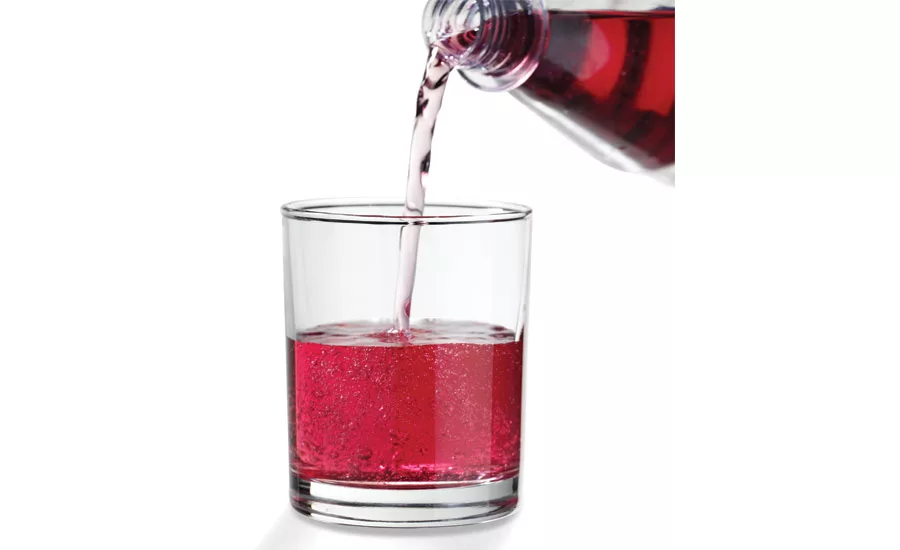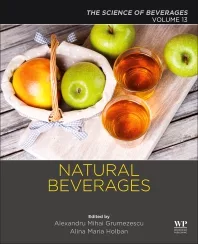Natural colors requests grow in line with clean label
Beverage-makers seeks out stable natural colors

In the consumable consumer packaged goods market, clean label is having a growing influence. Among the areas where ingredient suppliers have noted clean label’s impact, color solutions are near the top.
“The push toward cleaner labels is no longer a trend, it’s a truly global phenomenon,” says Megan Longhi, technical service manager of beverage and dairy for Sensient Food Colors, St. Louis. “Natural color leads in new product launches in almost every region of our world today. In just four years, the percentage of new products being introduced into the market with natural colors has increased by 63 percent. Today’s consumers want to see color from botanical sources without compromise to taste and visual appearance.”
Michael Serrur, corporate communications for GNT USA Inc., Tarrytown, N.Y., highlights how the growing interest in clean label stems from an ongoing shift in consumers’ tastes and beliefs. “The clean-label trend is the culmination of the consumer’s desire for simpler ingredients that they can understand and identify,” he says. “It has caused manufacturers to shift away from artificial colors and toward color solutions with recognizable ingredients.”
Serrur adds that beverage-makers recognize the importance that consumers place on natural color solutions.
“Food manufacturers benefit from using natural color solutions because it opens them to a wider spectrum of consumers,” he says. “Some shoppers simply won’t buy foods — for themselves or their families — that contain artificial colors. We conducted an online survey of 5,000 participants from 10 different countries and found that two-thirds of respondents reject artificial colorants in food and beverages.”
Brittany Blanco, research and development team lead for Fresno, Calif.-based San Joaquin Valley Concentrates (SJVC), also notes the importance of familiar ingredients when appealing to clean-label conscious consumers.
“Colors from natural sources are an absolute must when formulating a clean-label product,” she says. “Consumers don’t want a color compound in their food that sounds like a chemical. They want ingredients in their food that sound like items that can be consumed on their own or items they might stock in their kitchen.”
As clean-label color solutions gain in popularity, some formulators not only are using them in new products but also in reformulations. “Clean labels are continuing to increase the market for natural colors,” says Jeff Greaves, president of Food Ingredient Solutions (FIS) LLC, Teterboro, N.J. “Many major companies have announced plans to switch existing products to natural colors, and main retail chains are prohibiting their synthetic counterparts.”
Education also is playing a role in the use of natural colors in beverage formulations. “The clean-label movement is driving interest in natural colors and flavors,” says Mukul Juneja, vice president of marketing for WILD Flavors & Specialty Ingredients, a division of Chicago-based Archer Daniels Midland Co. (ADM). “Consumers want to know more about what’s in the foods and drinks they consume, where those ingredients come from and the purpose they serve.”
Brian Sethness, executive vice president of sales and marketing for Skokie, Ill.-based Sethness Caramel Color, notes that even though clean label doesn’t have a federal definition, its impact cannot be overlooked.
“Consumers are looking for authenticity and transparency in the beverages they drink,” he says. “This extends to the ingredients used in those products. Consumers are looking for flavor and color solutions that are simple to understand.”
To support this demand, Sethness offers a range of caramel color solutions that align with clean-label trends. “Sethness has seen a spike in demand for Non-GMO offerings,” he says. “Sethness now produces 12 Non-GMO Project Verified caramel colors, which many of our customers have started purchasing. These are more expensive offerings than our typical caramel colors.”
Milwaukee-based Chr. Hansen also has ensured that its portfolio is supporting beverage-makers’ desire for color concepts that support clean label. “At Chr. Hansen, we have seen the interest for clean-label color solutions increasing over the years, and we believe it will continue to grow,” says Ashlee Martin, senior application scientist for Chr. Hansen. “Because of the increase in demand, we have launched a range of clean-label colors that contain all natural and non-GMO ingredients. Our clean-label colors provide a wide range of shades from yellow and orange to red and purple and are also organic complaint.”
However, clean-label trends are not the only reason natural color concepts are proliferating throughout the beverage market.
“Another consumer trend impacting natural colors may be ‘adventurism,’” says Stephen Lauro, general manager for colorMaker Inc., Anaheim, Calif. “For example, more frequently than in the past, beverage companies challenge consumers with ingredients that settle to the bottom of the beverage, natural colors included. Consumers no longer reject out-of-hand beverages with ‘sediment’ or beverages that come with a ‘shake well’ label.
“Similarly, consumers now seek exotic flavors and colors where, in the past, they might have rejected such flavors — think aloe and its associated light green color or hibiscus and its associated deep red color,” he continues. “Consumers appear to be adventurous. It’s not clear to me if this is because consumers trust the clean-label trend or, rather, because consumers are simply bored with vanilla, chocolate and strawberry.”
Adjusting to change
Although natural color concepts have registered a notable uptick in usage, making the switch can pose challenges to beverage-makers. To ease the transition, color manufacturers suggest working with a trusted supplier.
“When using natural color solutions, it’s important to understand the entire production process. Certain factors, like packaging or light exposure, can affect natural colors,” GNT’s Serrur says. “That’s why it’s crucial to work with ingredient suppliers that understand stability because they can find solutions to most technical challenges. GNT has been helping companies transition to natural colors for almost 40 years, so we’ve pretty much seen it all.”
This also remains important because of the formulation differences when working with natural colors, experts note.
“Colors can vary with pH,” FIS’ Greaves says. “Some colors are sensitive to metal ions like calcium and iron. Some colors are sensitive to vitamin C, though some are stabilized by it. The best way to address it is by working closely with an experienced natural color supplier to select the proper color for the application.”
Mark Rainey, vice president of Global Food Marketing for ADM, also highlights the challenges that can arise when switching from synthetic to natural colors.
“The process to switch from artificial or synthetic alternatives can be challenging for developers for a variety of reasons,” he says. “For example, there’s no single one-to-one replacement solution, natural alternatives can be much more expensive on a per-pound basis, naturally sourced ingredients may not be stable in all applications, and there may be important labeling change implications to consider.”
Sensient’s Longhi notes that color suppliers have developed technologies to enhance the formulation process when working with natural solutions.
“Like any other ingredient from nature, there are more complexities, but many technologies available today enable us to overcome many obstacles,” she says. “Microfine Technology allows us to take a natural color and incorporate it two-fold into dry powder beverage mixes; two-fold equals [a] colored powder and [a] colored hydrated form but in one delivery system.”
Another challenge for natural colors can be trying to mimic the vibrant hues that some consumers have come to expect from synthetic colors.
“Often natural colors do not work as well as synthetic offerings, [they] can fade, for example, or have taste implications,” Sethness Caramel Colors’ Sethness says. “Plus, they are much more expensive.”
However, color suppliers recognize the importance of developing stable natural colors and continue to support the market shift with new options for formulators.
“Acid and heat stability can also present challenges when it comes to natural colors,” ADM’s Juneja says. “Our patented blue color from fruit juice is the only heat- and acid-stable natural blue solution available in the United States. This color, when combined with natural sources of yellow and red, allows us to create a wide range of hues including browns that can be used to replace caramel in a variety of applications. Innovation around new pigment options for food and beverage will continue as consumers continue to seek simplicity and transparency in their foods and beverages.”
Chr. Hansen’s Martin also highlights the efforts being made by suppliers to further the natural colors movement. “Formulation technology is important for developing and providing natural colors that are robust and stable for beverage applications,” she says. “This includes improved emulsification and encapsulation systems. With these new and improved formulation technologies, we can provide colors that are stable in a beverage and also an improved cost in use.”
These efforts remain important because of the strong association between color and taste, experts note. “Color is the first thing a consumer experiences when approaching a beverage,” SJVC’s Blanco says. “While on the shelf, a consumer cannot smell or taste the beverage, but they can evaluate and compare based on what they see. The color of the beverage gives the consumer insight into the flavor and experience that is to follow.”
ADM’s Rainey explains that the company recently completed a consumer study about the correlation between colors and flavors to overall product liking.
“Using our proprietary OutsideVoice consumer research panel, participants were shown a series of gummies made with natural flavors and different matching color shades,” he explains. “Consumers were asked to indicate which ones they liked best based on overall appearance, color, taste and color fit-to-taste. The results of the study revealed which natural color shades, flavors and sweetness levels drive preference. The study was strongly supported by our color chemists, flavorists, product development advisers and sensory science marketing professionals.
“Our work here continues, and we offer the most extensive range of singular solutions, integrated blends for specific applications and complete custom systems for a wide range of customer needs,” Rainey continues. “This is a great example of the holistic approach we’re taking to a complex challenge developers face. We’re well equipped to help them find the best and lowest-cost solutions while meeting consumer demand for natural taste preference.”
colorMakers’ Lauro notes that more work needs to be done in regards to natural colors, because he expects the demand only will continue.
“Beverage concentrates remain a very challenging environment for natural colors. I anticipate this will change in the future,” he says. “New color sources from gardenia, hibiscus and prickly pear will likely all be available in the future. Natural flavors with secondary color attributes may impact beverage formulations in the future. As the clean-label trend advances forward, the use of natural colors will expand to meet the demands of consumers and product developers alike.” BI
Looking for a reprint of this article?
From high-res PDFs to custom plaques, order your copy today!









